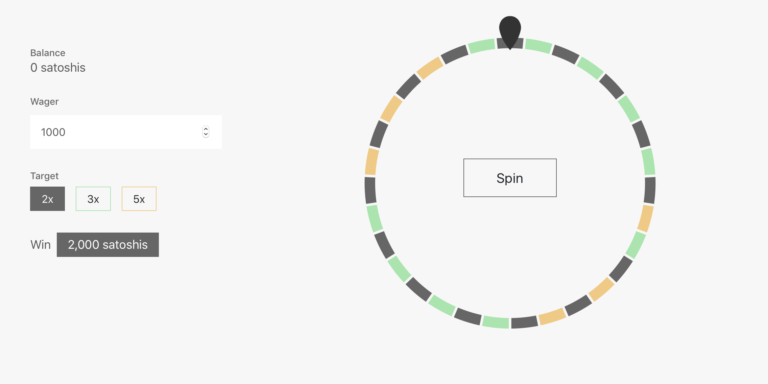Back in 2012, libertarian blogger and Bitcoin enthusiast Erik Voorhees had launched BTC’s new killer app: Satoshi Dice. At the time, gambling with cryptocurrencies seemed like a novel idea which had very little impact on Bitcoin, so it quickly became a fun activity which legitimized and popularized the use of bitcoin. At its peak, Satoshi Dice clogged the Bitcoin blockchain with huge numbers of transactions and raised some of the first concerns in regards to scalability (much like CryptoKitties caused congestion on Ethereum’s blockchain).
Nevertheless, the BTC gambling game was one of the first popular uses of cryptocurrency and it helped spark the imagination of other blockchain developers. Satoshi Dice was influential for its simplistic yet brilliant concept, and it also served as a lesson for enthusiasts of the technology.
Six years later, Lightning Spin reignites the spark of crypto gambling and makes it run with the speed of Lightning.
Part of demonstrating the capabilities of the Lightning Network, as well as testing its limits, involves developing small applications which allow Bitcoin enthusiasts to get a glimpse of the future.
Unlike its spiritual predecessors, Lightning Spin doesn’t operate on the blockchain and solely relies on the second layer scaling solution. Therefore, it can’t clog the network and there is no way the application will have scalability issues.
The game was created and launched by Lightning enthusiast Lui Gomes, and the release caught the attention of Blockstream CSO Samson Mow and Bitcoin maximalist Armin van Bitcoin. Given this kind of publicity, it’s expected that lots of BTC holders will go and get their gambling fix.
Some statistics on the first 24h of https://t.co/sDriH0vXro
4,820 Lightning invoices created
813 Lightning transactions183 people tried their luck in 2,930 spins
3,126,659 satoshis were paid to the lucky ones
No on-chain transactions. No ICOs. No bullshit. Pure ⚡️
— Rui Gomes (@ruigomeseu) June 27, 2018
Spinning the Roulette
There are three different approaches to Lightning Spin, and the boldness of your wager can help you double, triple, or even quintuple the amount of Satoshis you’re betting. The minimum amount you must put on the line is 1000 Satoshis (0.001 BTC), and the current maximum threshold is set at 100 Satoshis (0.1 BTC).
There really isn’t much to the game except for the thrill of gambling your precious bitcoin through a revolutionary layer two scaling solution. In the true Bitcoin spirit, the roulette system is transparent and allows users to check their individual spin result just to be sure that they aren’t being cheated. The “Provably Fair” tab features a server seed hash, and a client seed which confirm that the system is being fair and running under the promised rules.
At press time, 417 players have spun the roulette 21,000 times, and have wagered 8.93 BTC. The numbers aren’t bad at all considering the fact that only a few days have passed since the official release of the gambling game.
Introducing: Lightning Spin. SatoshiDice on lightning. Wage, spin, win. ⚡👇 #bitcoin #LightningNetworkhttps://t.co/npoX4ce7qL pic.twitter.com/uBY6udFKqC
— A v B ⚡ (@ArminVanBitcoin) June 27, 2018
If Lightning Spin gets wildly popular it will be interesting to see how it’s going to resist gambling regulations from certain states around the world. We already have a history of Satoshi Dice shutting down service in the USA to avoid legal issues and time will tell whether or not popular gambling websites report this unexpected competition to authorities. Although simple, Lightning Spin showcases the exciting potential of the Lightning Network.









